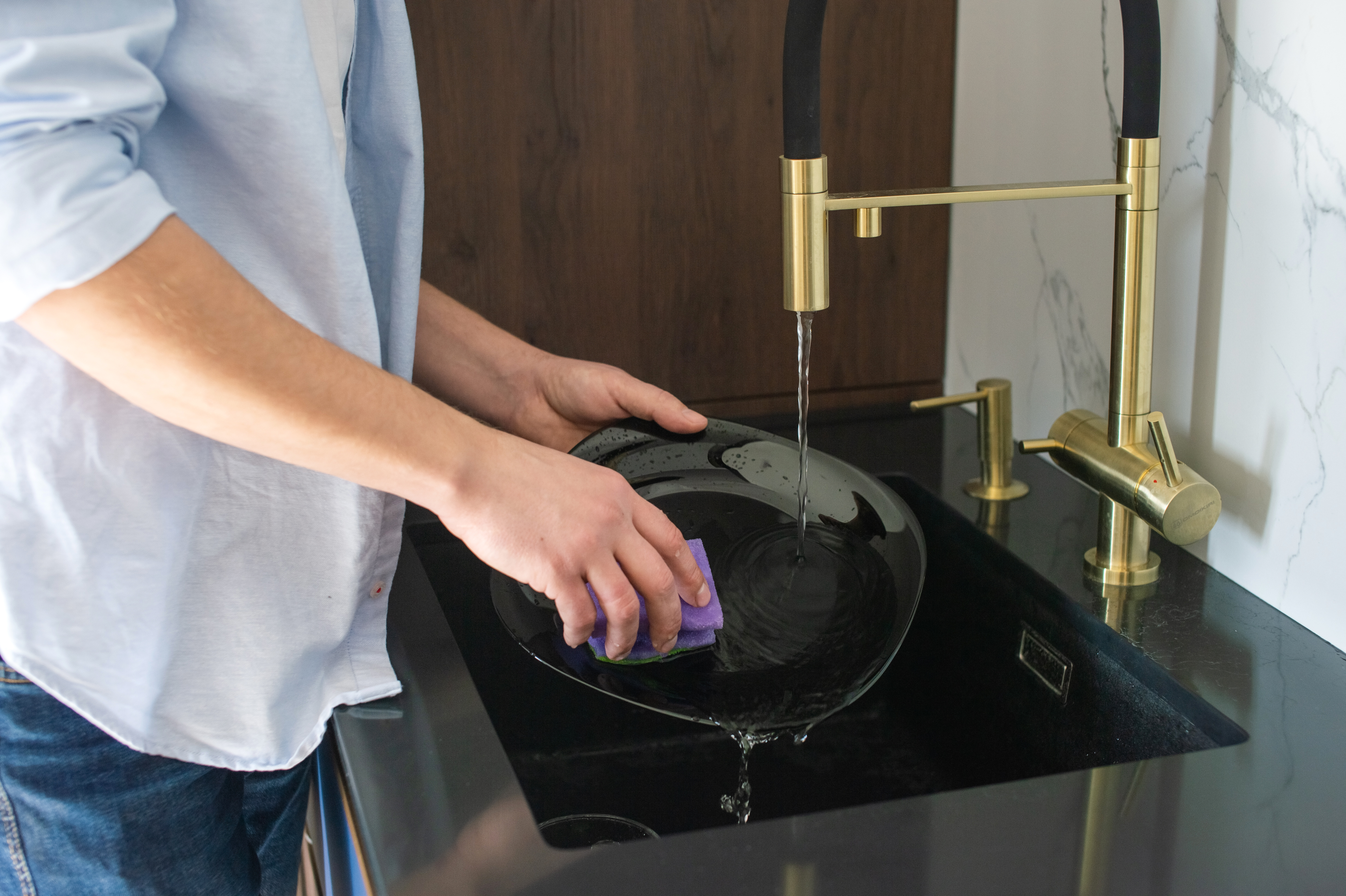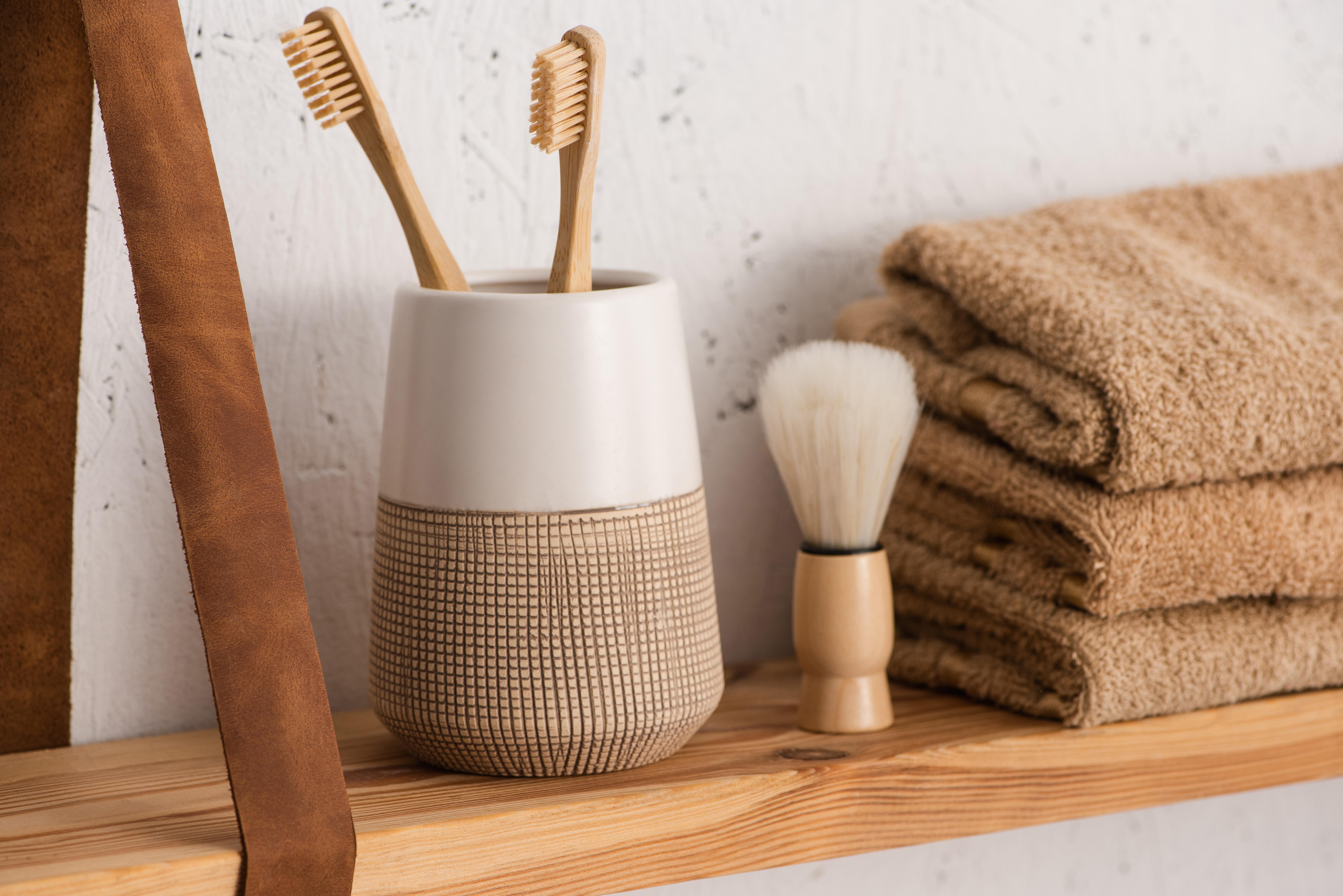Things You Touch Every Day That Carry Germs
In our daily routines, we encounter countless objects that we handle without a second thought. These objects, often innocuous in appearance, can harbor a hidden world teeming with germs. From the moment we wake up to when we retire for the night, our hands are in constant contact with surfaces that serve as breeding grounds for bacteria and viruses. While some of these microorganisms are harmless, others can pose significant health risks. This exploration will delve into 10 everyday objects that are surprisingly germ-laden, shedding light on the unseen microbial communities that thrive on them and offering insights into how we can protect ourselves from potential infections.
1. Mobile Phones: A Constant Companion and Germ Haven

Mobile phones are indispensable in modern life, yet they are also notorious for harboring germs. Studies have shown that the average smartphone is covered with more bacteria than a toilet seat. This is due to the constant handling of phones throughout the day, often while eating or after touching other germ-ridden surfaces. The warmth generated by phones also creates an ideal environment for bacteria to multiply. Regular cleaning with alcohol-based wipes can help reduce the microbial load, but the key is to be mindful of where and how often we use our phones, especially in environments like public restrooms or while preparing food.
2. Computer Keyboards: The Overlooked Microbial Playground

Computer keyboards are another common item that many people handle daily, often without considering the potential for germ accumulation. Crumbs, dust, and skin cells can fall between the keys, creating a veritable buffet for bacteria. Research has found that keyboards can harbor harmful bacteria such as E. coli and Staphylococcus aureus. Regularly cleaning keyboards with compressed air and disinfectant wipes can help mitigate this risk. Additionally, washing hands before and after using a computer, especially shared ones, can significantly reduce the transfer of germs.
3. Remote Controls: The Unseen Germ Transmitters

Remote controls are frequently used in homes, hotels, and hospitals, making them a prime vector for germ transmission. Unlike other surfaces, remotes are rarely cleaned, allowing bacteria and viruses to accumulate over time. This is particularly concerning in settings like hospitals, where remotes can carry pathogens from one patient to another. To minimize risk, it's advisable to clean remotes regularly with disinfectant wipes, especially in communal areas. Encouraging family members or guests to wash their hands before using shared remotes can also help reduce the spread of germs.
4. Light Switches: A Flick Away from Bacteria

Light switches are touched multiple times a day, often by multiple people, making them a hotspot for germs. Despite their frequent use, they are seldom cleaned, allowing bacteria to linger and multiply. Studies have found that light switches can be contaminated with pathogens like MRSA, especially in public or shared spaces. To combat this, it's important to include light switches in regular cleaning routines, using disinfectant sprays or wipes. Educating household members about the importance of hand hygiene before and after touching commonly used surfaces can further reduce the risk of germ transmission.
5. Door Handles: The Gateway for Germs

Door handles are ubiquitous in both public and private spaces, serving as a common touchpoint for many people. This makes them a prime location for the transfer of germs. Research has shown that door handles can host a variety of bacteria and viruses, including the flu and cold viruses. Regularly disinfecting door handles, especially those in high-traffic areas, can help minimize the spread of germs. Installing touchless door mechanisms or using elbow or foot-operated door openers can also be effective strategies for reducing direct contact with potentially contaminated surfaces.
6. Kitchen Sponges: The Bacterial Breeding Ground

Kitchen sponges are essential for cleaning, yet they are one of the dirtiest objects in any household. Constantly damp and filled with food particles, sponges provide an ideal environment for bacteria to thrive. Studies have shown that kitchen sponges can contain more bacteria than a toilet bowl, including harmful pathogens like Salmonella and E. coli. To reduce bacterial growth, sponges should be replaced frequently and sanitized regularly, either by microwaving them or soaking them in a bleach solution. Alternatively, using disposable cleaning cloths or brushes can help maintain a more hygienic kitchen environment.
7. Toothbrush Holders: The Overlooked Germ Reservoir

Toothbrush holders are often overlooked when it comes to cleaning, yet they can accumulate bacteria from the moisture and residue left on toothbrushes. This creates a perfect environment for germs to thrive. Studies have found that toothbrush holders can harbor bacteria such as Streptococcus and Staphylococcus. Regular cleaning of toothbrush holders with hot, soapy water or disinfectant can help keep bacterial growth in check. It's also important to ensure that toothbrushes are rinsed thoroughly and allowed to dry completely before being placed back in the holder.
8. Shopping Carts: The Public Germ Carriers

Shopping carts are handled by countless individuals daily, making them a significant source of germ transmission. Research has found that shopping cart handles can be contaminated with bacteria and viruses, including E. coli and the norovirus. Many stores now provide disinfectant wipes for customers to clean cart handles before use, a practice that can significantly reduce the risk of germ transfer. Additionally, using hand sanitizer after shopping and avoiding touching the face during shopping trips can further minimize the potential for infection.
9. ATM Keypads: The Financial Germ Exchange

ATM keypads are another everyday object that can harbor a significant number of germs. Used by numerous people throughout the day, these keypads can become contaminated with bacteria and viruses, including those that cause colds and flu. To reduce the risk of germ transmission, it's advisable to use a stylus or a knuckle to press the keys, rather than fingertips. Following up with hand sanitizer after using an ATM can also help prevent the spread of germs. Encouraging banks to implement regular cleaning of ATM surfaces can further enhance public health safety.
10. Handrails: The Supportive Yet Germy Surface

Handrails, whether on staircases, escalators, or public transport, are essential for safety but are also hotspots for germs. Countless hands touch these surfaces daily, transferring bacteria and viruses in the process. Research has shown that handrails can harbor a variety of pathogens, including those responsible for respiratory infections. Regular cleaning of handrails in public spaces is crucial, but individuals can also protect themselves by using hand sanitizer after touching these surfaces. Encouraging good hand hygiene practices, particularly in crowded areas, can help reduce the spread of germs.
Navigating a Germ-Filled World Safely

In our journey through the hidden world of germs on everyday objects, we've uncovered the surprising extent to which bacteria and viruses can thrive on the surfaces we frequently touch. While it's impossible to avoid germs entirely, being aware of the potential hotspots and taking proactive measures can significantly reduce the risk of infection. Regular cleaning, mindful hygiene practices, and educating ourselves and others about the importance of germ prevention are key strategies in navigating our daily environments safely. By adopting these habits, we can protect our health and that of those around us, making the invisible world of germs a little less daunting.